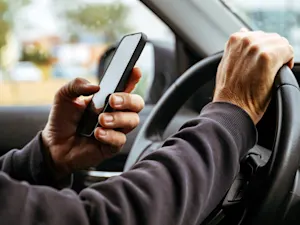
5 Traffic Laws You're Probably Breaking
Driving is a daily activity for many of us, but how often do we stop to consider whether we're following the rules of the road? It's easy to fall into behavior patterns that may seem harmless but could actually be illegal. In this article, we'll explore five common traffic violations drivers often overlook daily.
1. Always Yield to Emergency Vehicles
When you hear sirens or see flashing lights, it's important to pull over safely and let emergency vehicles pass. All 50 U.S. states have Move Over Laws in effect, requiring drivers to either move into a farther lane of traffic or slow down while passing emergency vehicles on the side of the road. Failure to do so can result in fines, license suspension, and even jail time. It's not just common courtesy — it's the law.
2. Stop Completely at Stop Signs
Known as the "California Stop," rolling through stop signs is an issue spreading far beyond California. The law requires a complete stop, defined as when there is no forward momentum and the speedometer needle is at 0. Take a moment to check all ways for moving vehicles, pedestrians, or other hazards before entering the intersection. A longer stop — three full seconds – is recommended. Ensuring safety reduces the risk of receiving a traffic ticket.
3. Turn On Your Headlights When It's Raining
Many states mandate drivers to turn on their headlights when using windshield wipers, regardless of the time of day. Rain impairs visibility, making it essential for drivers to increase their own visibility and to be seen by others on the road. Even if not required by law, it's a good practice to keep headlights on during rainstorms to enhance safety for all drivers.
4. Don't Change Lanes in the Middle of an Intersection
While not explicitly illegal in all states, changing lanes mid-intersection is generally considered unsafe and can result in citations for unsafe lane changes. Intersections are busy areas where sudden lane changes pose risks to drivers and pedestrians alike. It's best to wait until you've cleared the intersection before changing lanes, regardless of state laws.
5. Always Use Your Signal When Changing Lanes
Turn signals are essential for communicating your intentions to other drivers. Yet, studies show that a significant percentage of drivers fail to signal before turning or changing lanes. Using your indicator at least five seconds before merging gives ample warning to other drivers and reduces the risk of collisions. That's why it's not just good practice — it's a legal requirement.
References: 5 Traffic Laws You Might Not Realize You Broke | Key Traffic Laws for Safe and Confident Driving























